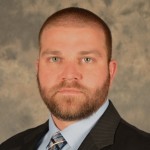By Anthony Galante, Associate Professor of Criminal Justice at American Military University
*This article is part of In Public Safety’s September focus on career transitions*
After graduating high school in New York City, I planned to fulfill a dream of becoming a commercial airline pilot. I earned bachelor’s and master’s degrees in aeronautical science, but graduated after September 11, 2001 and jobs were scarce in the aviation industry. This was the first unexpected turn in my career, but not the last. I offer my story as an illustration that there are many paths to a successful career.
I eventually went back to NYC where I became a security guard at a local hospital. At this job I was surrounded by great retired NYPD officers who would tell me amazing stories about their careers. I thought I could tie my interest in aviation with a career in law enforcement.
Joining the Police Force

During my career, I never stopped learning about my profession. I registered for every class possible and received more than 3,500 hours of advanced law enforcement training. I started to teach at my local academy, which sparked my passion for teaching.
I remained in the training division for five years, teaching high liability topics to new recruits and in-service training to fellow officers. It was during this time I met my mentor who recommended I go back to school to earn a master’s degree in criminal justice to and pursue a career in teaching at a collegiate level.
Education and Teaching
I was nervous going back to college and was even more nervous about taking classes online, since I had no experience with online education. I completed my master’s in Criminal Justice from American Military University (AMU). It was extremely challenging in the beginning, but I learned to incorporate it into my daily routine.
I immediately embarked on getting a Master’s in Homeland Security at AMU because I knew it was pertinent to my career and to my ambition of teaching.
A short time later, I was offered an adjunct teaching position for the criminal justice and homeland security program at Keiser University. This position allowed me to give back to my community and help fellow law enforcement officers get their degrees.
Transition to Unmanned Aircraft Systems
I would look at the aviation degrees on the wall in my office and dream of combining my aviation background with law enforcement. In 2011, I was determined to make my dream come true. I wanted to integrate unmanned aircraft systems (UAS), also called drones, into my law enforcement agency.
Today, I am the director of training services for the Unmanned Safety Institute, a professional safety organization that promotes and trains organizations and agencies on how to integrate and utilize UASs safely and effectively.
I currently teach in a full-time capacity for Keiser University and am also a faculty member at Bethune Cookman University and AMU. Earlier this year, Embry-Riddle hired me as an adjunct professor to teach in the aeronautical science unmanned aircraft system program. I have made a full circle in my career by combining the passions in my life.
